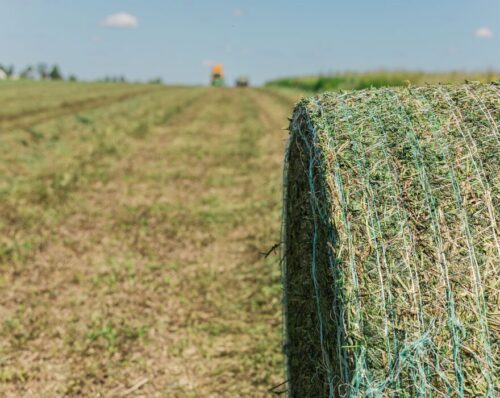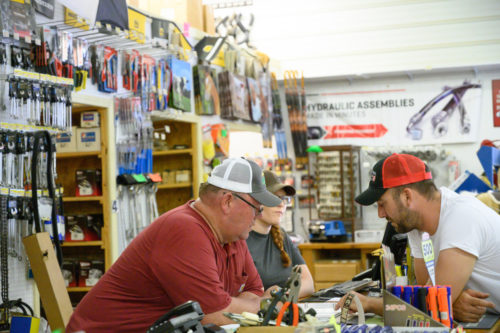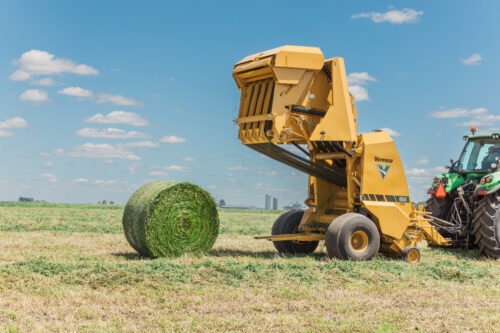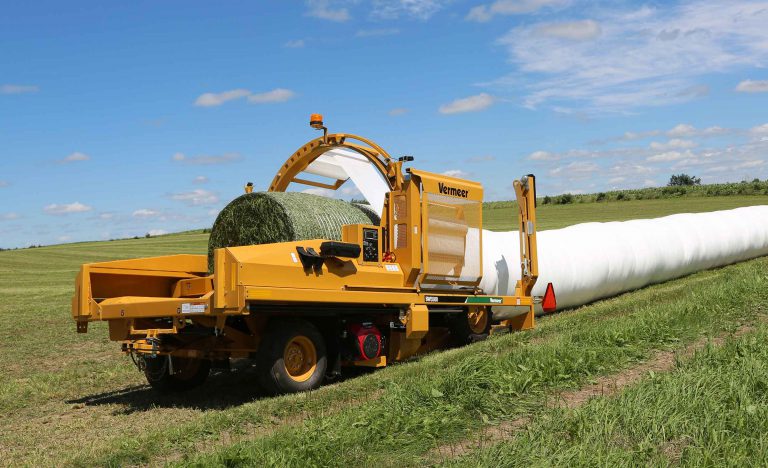
The Growing Trend of High-Moisture Baling and Wrapping
March 2017
With today’s unpredictable weather patterns and extreme weather conditions, dairy farmers and beef producers are finding it increasingly difficult to bale dry hay. Many are now baling high-moisture forages and grasses. This can help them get in and out of the field more quickly because they aren’t waiting on their forage to dry. Not to mention dealing with random storms that mean they have to start the drying process all over again. But reducing the impact of weather on operations isn’t the only benefit of making high-moisture bales. Read on to learn more potential benefits to your operation and to get tips on how to wrap hay bales with higher moisture.
The benefits of baling high-moisture forage
Reduced hay loss
The extra cost required to bale high-moisture hay (versus dry hay) can easily be offset by reduced hay loss* during harvesting, storage and handling. Dry bales stored outside, especially in high-humidity environments, can experience losses of 20% to 30%** in just eight months.
High-quality hay
Forage is at its highest quality immediately after it’s cut. Therefore, baling and wrapping high-moisture forage at that stage provides your cattle with a high-quality, high-protein feedstuff.
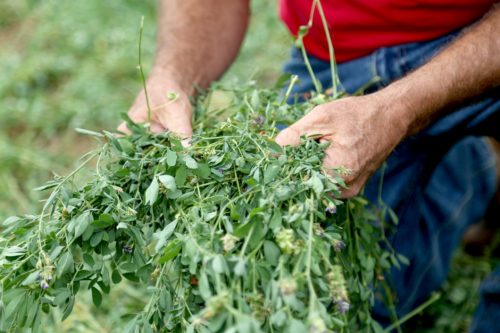
More palatability for cows
And it’s more palatable. Refusal rates by cows eating dry hay can add another 10% to 20%** in hay losses. Check out this study we did with heifers to see if they preferred a dry bale or a wet bale.
Earlier hay harvest
Baling high-moisture forage allows you to harvest earlier and avoid damaging rain when dry hay crops are typically down. And it improves yields in later cuttings. For example, every extra day of delay waiting to bale an alfalfa crop amounts to a 6% yield loss on the following cutting*. Therefore, waiting five days to bale hay can mean a 30% yield reduction*.
Lower investment
If you’re starting from scratch, bale wrapping is roughly half the cost of investing in precision choppers, wagons and expensive storage facilities.
The cost of baling high-moisture hay
Baleage is a fairly inexpensive option for producers who rely heavily on baling hay and grazing. For the most part, you need a baler — one specifically designed for handling high-moisture forage. Those designed with a robust pickup assembly, heavy-duty tines and a pre-cutting knife system will make a significant difference in terms of impact on performance, feeding and increased palatability.
How to wrap high-moisture hay bales
We recommend wrapping hay at 45% to 55% moisture for best results. Different moisture levels result in different outcomes:
- 55% to 65% moisture: Great for fermentation, but you run the risk of leaving a 1- to 2-inch-deep (2.5-cm to 5-cm) wet, rank layer on the outside of the bale.
- 35% to 45% moisture: Minimal fermentation occurs, but it requires more layers of wrap. Bales can be fed up to a year later. At this range in moisture level, your primary goal is more about excluding oxygen than creating good fermentation for stored bales.
- Less than 35% moisture: Less fermentation occurs. It requires an extra layer or two.
 Wrapping tips:
Wrapping tips:
- Wrap as soon as possible. We recommend wrapping no more than 24 hours after baling to begin the fermentation process. This will reduce the internal temperature of the bale and prevent aerobic deterioration.
- Netwrap your bales. You get a smoother bale surface that contains the stems and reduces the chance of poking holes in the plastic film.
- Select blown, low-density polyethylene film around .04 inches (1 mm) thick.
- Pre-tension the film to stretch 55% to 75%. Excessive stretching allows oxygen and carbon dioxide to pass through the film. Under-stretching won’t allow the bale to properly seal because the plastic won’t adhere properly. And don’t wrap during a rainstorm; wet film loses its tackiness.
- Use a minimum of six wraps using quality plastic. Different field and crop conditions impact the number of wraps per bale needed, so be sure to consult a local expert. Also, avoid rodenticide-treated sisal twine. It has the potential to degrade film.
- For best results, run your wrapped bales inline running north/south. Plastic film won’t degrade as quickly if you simply use the east-to-west path of the sun to uniformly balance bale exposure to ultraviolet rays.
- Wrap close to the storage site to minimize handling. Store away from trees, where birds and rodents are found. This reduces the chance of plastic film being damaged.
- Avoid sharp stubble areas and poorly drained soil.
- Periodically check for damage. If stems have poked through the film or you note rodent damage, repair immediately.
- After wrapping, don’t move or handle bales after 12 hours. Squeezing them can break film layers
If you’re thinking making high-moisture hay bales would benefit your operation, talk to your Vermeer dealer about ways they can help and to learn about equipment that could help you maximize productivity.
* Based on data collected on swathed alfalfa by Dr. Dan Undersander, forage agronomist at the University of Wisconsin-Madison.
** Based on data collected on dry hay losses in high-moisture climates by Mike McCormick, former dairy and beef specialist with Louisiana State University AgCenter Research and Extension.


